The Ultimate Travel Guide to Longhu Pagoda: Tips for an Unforgettable Visit
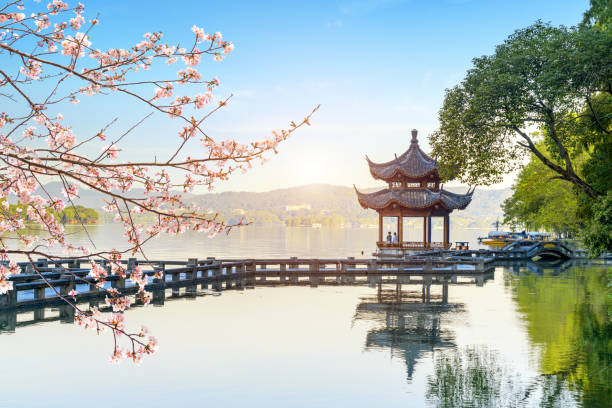
An Essential Guide to Visiting Longhu Pagoda
In This Guide
- An Essential Guide to Visiting Longhu Pagoda
- The Rich History and Legends of Longhu Pagoda
- Main Highlights: What You Absolutely Can’t Miss
- Planning Your Visit: A Practical Guide
- Tickets: Prices, Booking, and Tips
- How to Get There: A Complete Transportation Guide
- Local Cuisine and Accommodation Nearby
- Frequently Asked Questions
- Final Thoughts on Your Trip
Nestled beneath the majestic Baihu Mountain in the Licheng District of Jinan, the Longhu Pagoda (龙虎塔)—or Dragon Tiger Pagoda—stands as a testament to the architectural and cultural richness of ancient China. This historical edifice, with its intriguing blend of mythology and craftsmanship, invites international travelers to immerse themselves in the profound stories etched into its very stones.
As you approach the pagoda, the allure of its intricate carvings and the serene surroundings promise an unforgettable experience. Constructed during the late Tang Dynasty, around the 9th century, Longhu Pagoda is an architectural marvel that showcases the evolution of Chinese pagoda design. At a height of 12.27 meters, its elegant square pavilion style is adorned with vivid reliefs of dragons, tigers, and celestial beings, each telling tales of spirituality and ancient lore.

Longhu Pagoda.
Why Visit Longhu Pagoda?
- Historical Significance: This pagoda is one of the few remaining examples of Tang Dynasty architecture, offering insight into the artistic and cultural trends of the era.
- Breathtaking Views: Standing at the foot of the pagoda, visitors are treated to panoramic views of the surrounding landscape, especially enchanting at sunrise or sunset when the tower is bathed in golden hues.
- Cultural Experiences: The site is not just a visual feast; it’s steeped in local traditions and folklore. Engaging with local artisans and trying Shandong cuisine enhances your visit, providing a deeper understanding of the region’s heritage.
Plan Your Visit
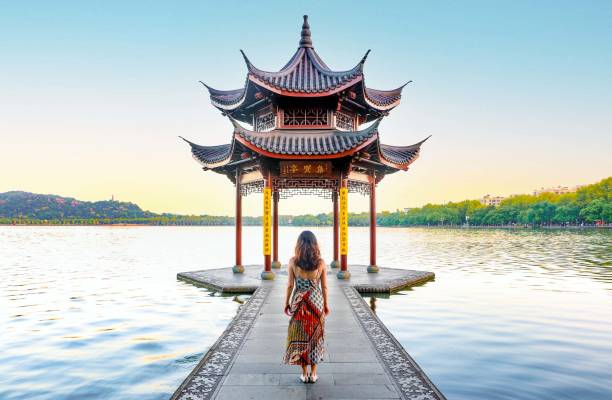
Longhu Pagoda.
To ensure a fulfilling journey to Longhu Pagoda, consider the following tips:
- Timing: Allocate 1 to 2 hours for your visit. This allows you to explore the pagoda’s intricate details and soak in the tranquil atmosphere.
- Transportation: Easily accessible from Jinan, you can choose to drive, take a bus, or use ride-sharing services. The journey typically takes 1-2 hours.
- Best Times for Photos: Capture the magic of Longhu Pagoda at dawn or dusk when the natural light accentuates its beauty.
- Dress Appropriately: The top of the tower can be windy, so bring a light jacket to stay comfortable while exploring.

Longhu Pagoda.
Longhu Pagoda is not merely a destination; it is a bridge to the past, offering travelers a glimpse into the rich tapestry of Chinese history and culture. As you explore its ancient stones and admire its architectural beauty, you will find yourself captivated by the stories of faith, artistry, and resilience that have withstood the test of time.
The Rich History and Legends of Longhu Pagoda
Nestled under the shadow of Baihu Mountain in Jinan, Shandong Province, the Longhu Pagoda stands as a remarkable testament to ancient Chinese architecture and history. This architectural gem, with its intricate design and storied past, offers a glimpse into the artistic and cultural legacy of the region.
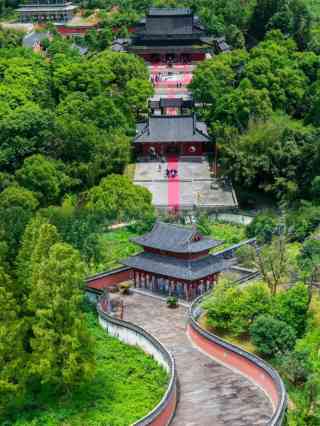
Longhu Pagoda.
A Journey Through Time
The Longhu Pagoda, also known as the Dragon Tiger Pagoda, is believed to date back to the late Tang Dynasty (846-907 CE). Its architectural style reflects the flourishing artistic expressions of that era, showcasing the transition from simple structures to more elaborate designs that characterized subsequent dynasties. The pagoda is a single-story square pavilion-style structure, standing at an impressive height of 12.27 meters. The design features a unique brick-carved imitation wood structure, with flame-shaped arched doors that invite visitors to explore its sacred interior.
The pagoda is adorned with magnificent reliefs depicting dragons and tigers—symbolic creatures in Chinese mythology that represent power and strength. These carvings, alongside images of Buddha, disciples, and Bodhisattvas, reflect the deep spiritual significance of the site, which has been a center for Buddhist worship for centuries.
Legends and Folklore
Longhu Pagoda is steeped in local legends that add a layer of mystique to its historical significance. One popular tale speaks of the pagoda as a guardian against malevolent spirits, believed to have been constructed to protect the surrounding community. It is said that when the sun sets and the pagoda is bathed in the warm hues of dusk, the spirits of the past awaken, watching over those who visit.

Longhu Pagoda.
Another legend narrates the tale of two celestial beings—a dragon and a tiger—who descended from the heavens to protect the pagoda and its inhabitants. According to folklore, these divine creatures continue to watch over the structure, ensuring that it remains a sanctuary of peace and tranquility amidst the chaos of the modern world.
Architectural Significance
The Longhu Pagoda is not just a spiritual symbol; it is also an architectural marvel. The craftsmanship involved in its construction showcases the advanced masonry techniques of ancient China. The pagoda’s design incorporates a harmonious blend of aesthetics and functionality, with its symmetrical proportions and exquisite carvings illustrating the artistry of the Tang and Song Dynasties. The pagoda has been recognized as a national key cultural relic, highlighting its importance in the preservation of Chinese heritage.
Exploring Longhu Pagoda Today
Visiting Longhu Pagoda is an experience that immerses travelers in both history and nature. The surrounding area is tranquil, allowing for peaceful reflection and appreciation of the pagoda’s grandeur. Many visitors recommend timing their visit for sunrise or sunset—when the light casts enchanting shadows and the pagoda appears almost ethereal against the vibrant sky.
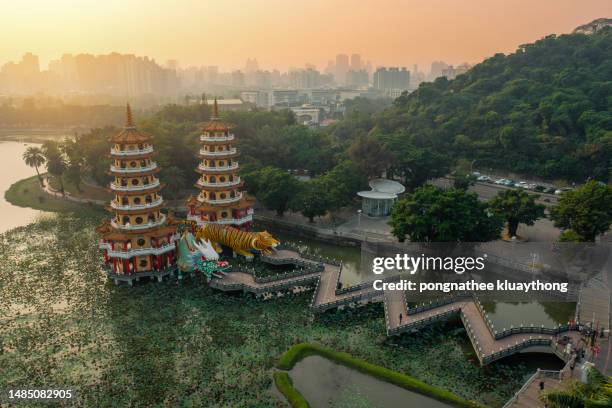
Longhu Pagoda.
While exploring, don’t miss the chance to indulge in local Shandong cuisine, famed for its delicious pancakes and hearty dishes. After a day of discovery, consider staying at nearby homestays or hotels that capture the essence of the region’s charm.
In conclusion, the Longhu Pagoda is more than just a historical site; it is a living monument that embodies the rich tapestry of Chinese culture and spirituality. Its legends, architectural beauty, and serene surroundings make it a must-visit destination for anyone eager to delve into the depths of China’s storied past.

Longhu Pagoda.
Main Highlights: What You Absolutely Can’t Miss
Discovering Longhu Pagoda: The Must-See Highlights
Longhu Pagoda (龙虎塔), a historical gem nestled in the serene landscape of Jinan, Shandong Province, offers visitors a captivating glimpse into China’s architectural and cultural heritage. Whether you are an aficionado of ancient structures or simply seeking to immerse yourself in the beauty of Chinese history, this pagoda is not to be missed. Here are the highlights that will enhance your visit:
1. A Journey Through Time
- Architectural Marvel: The Longhu Pagoda, with its origins tracing back to the Tang Dynasty and renovations during the Song Dynasty, showcases the evolution of Chinese pagoda design. Its intricate brick-carved eaves and brackets reflect the artistic styles of the periods, making it a stunning example of ancient craftsmanship.
- Historical Significance: Recognized as a key cultural relic, this pagoda encapsulates centuries of history, providing invaluable insights into the architectural advancements and cultural practices of its time.
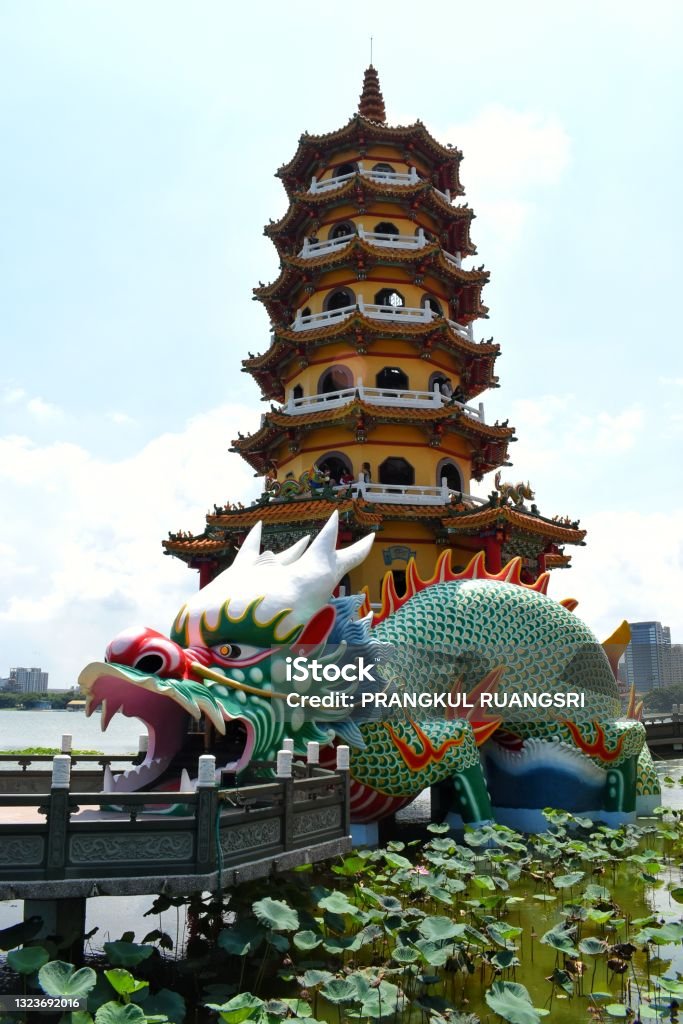
Longhu Pagoda.
2. The Enchanting Surroundings
- Scenic Beauty: Located under the majestic Baihu Mountain, the pagoda stands as a sentinel amidst lush greenery and tranquil landscapes. The view from the pagoda offers a breathtaking panorama, especially at dawn and dusk when the sun casts a warm glow over the structure.
- Photographic Opportunities: Capture the essence of Longhu Pagoda by photographing it during sunrise, when the golden light accentuates its features. At sunset, the tower’s silhouette against the vivid sky creates a magical scene, perfect for capturing unforgettable memories.
3. Cultural Immersion
- Local Cuisine: No visit to Longhu Pagoda is complete without indulging in the local delicacies. Savor Shandong pancakes and other regional specialties at nearby eateries, which offer a delicious taste of the local culture.
- Spiritual Reflection: The pagoda serves not only as a historical monument but also as a spiritual haven. Visitors can explore the nearby temples, such as the Jade Emperor Temple, which enhance the cultural experience and provide a deeper understanding of the region’s spiritual heritage.
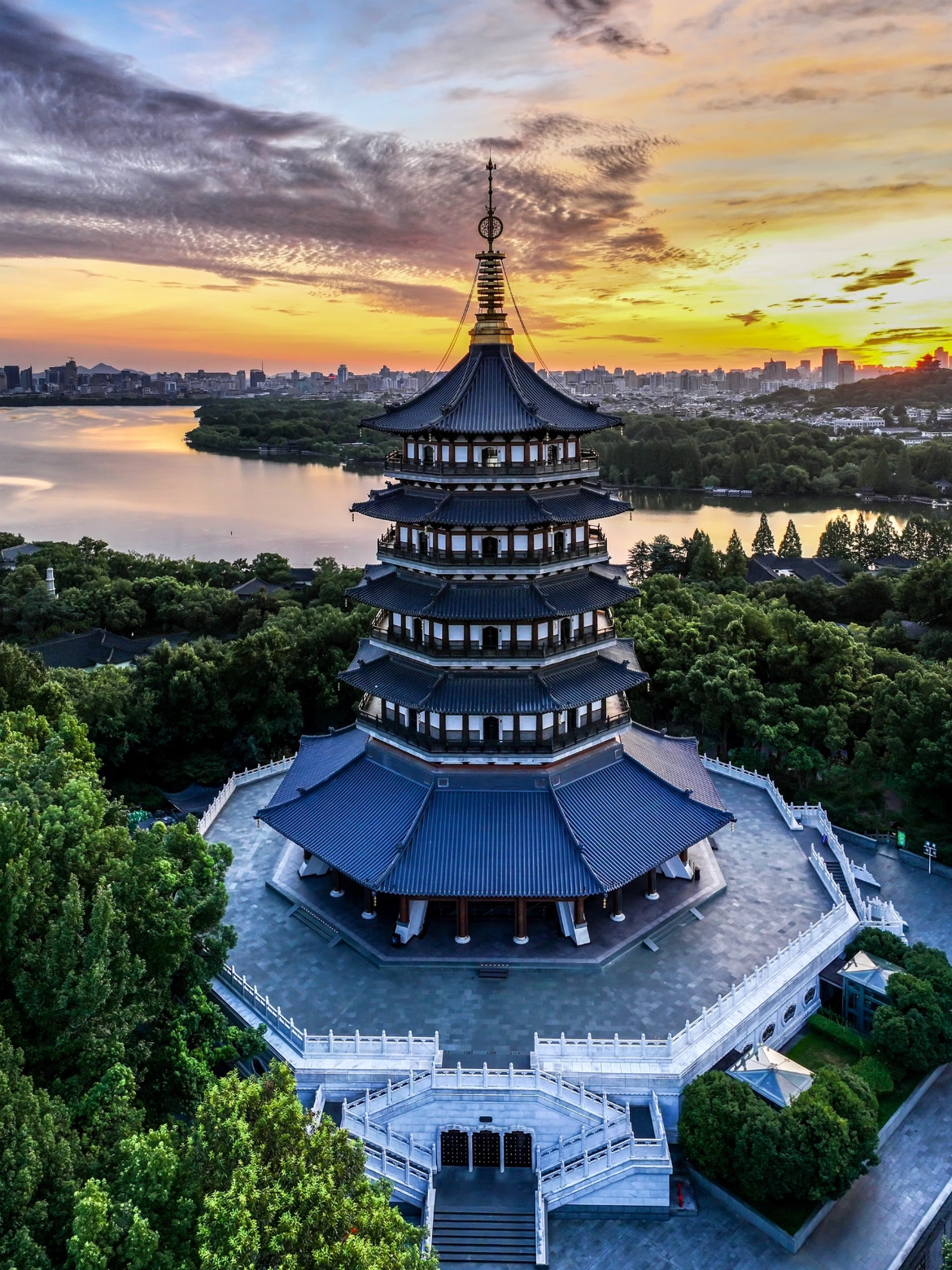
Longhu Pagoda.
4. Practical Tips for Visitors
- Plan Your Visit: Allocate 1-2 hours for your exploration of Longhu Pagoda to fully appreciate its historical and architectural significance. The peaceful environment allows for a leisurely stroll and reflection.
- Transportation: Accessible via a short drive or bus ride from Jinan, consider using local transportation services like Didi for convenience.
- Dress Accordingly: Given the windy conditions often found at the top of the pagoda, wearing a light jacket is advisable. Also, ensure your phone is charged—there will be countless photo opportunities!
5. Preserving the Legacy
- Educational Insights: Engage with the stories etched into the pagoda’s reliefs and carvings, which depict Buddhist iconography and local legends. Each detail offers a window into the beliefs and aesthetics of ancient Chinese society.
Longhu Pagoda is more than just a structure; it is a bridge to the past, inviting travelers to explore its depths. Embrace the history, enjoy the scenery, and immerse yourself in the rich cultural tapestry that this extraordinary site has to offer.

Longhu Pagoda.
Planning Your Visit: A Practical Guide
Discovering Longhu Pagoda: A Practical Guide for Your Visit
Nestled under the majestic Baihu Mountain in Jinan, Shandong Province, Longhu Pagoda (龙虎塔) is a remarkable testament to China’s rich historical and architectural heritage. This guide will equip you with the essential information to make the most of your visit to this ancient treasure.
Getting There
Transportation Options:
– By Car: From Jinan city center, driving is a convenient option. You can expect a journey of about 1-2 hours, depending on traffic.
– By Bus: Several buses operate from Jinan to the pagoda area. Check local schedules for the most efficient routes.
– Ride-Hailing Services: Consider using Didi or Shunfeng for a hassle-free journey. If you prefer a budget-friendly option on your return, look for nearby bus stops.
Best Time to Visit
Ideal Duration: Allocate about 1-2 hours to explore Longhu Pagoda and its surroundings thoroughly.
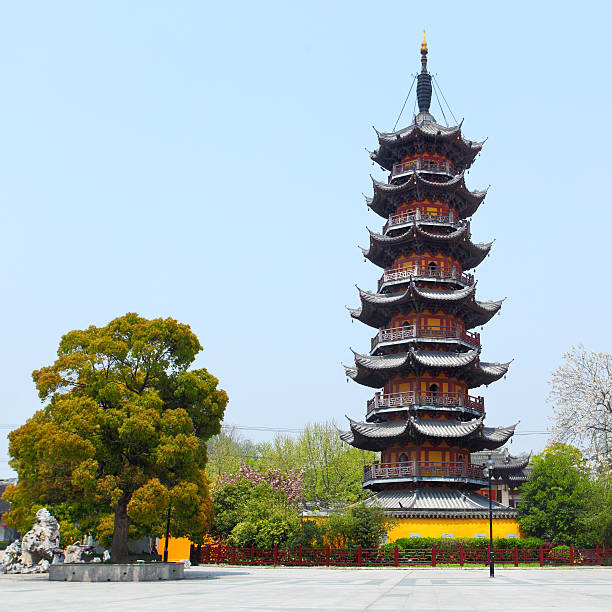
Longhu Pagoda.
Optimal Visiting Times:
– Sunrise: Witnessing the first light of dawn illuminating the pagoda creates a magical atmosphere, perfect for photography.
– Dusk: The evening sky, often painted with hues of purple and red, enhances the pagoda’s mysterious allure.
What to See
Architectural Highlights:
– Longhu Pagoda, with its intricate carvings and unique design, dates back to the Tang Dynasty, showcasing the evolution of pagoda architecture in China.
– The dragon and tiger motifs adorning the pagoda are not just decorative; they symbolize power and protection in Chinese culture.
Nearby Attractions:
– Explore the scenic Shen Tong Temple, which is home to another exquisite pagoda.
– Visit the Simen Pagoda Scenic Area, known for its serene environment and ancient ambiance.
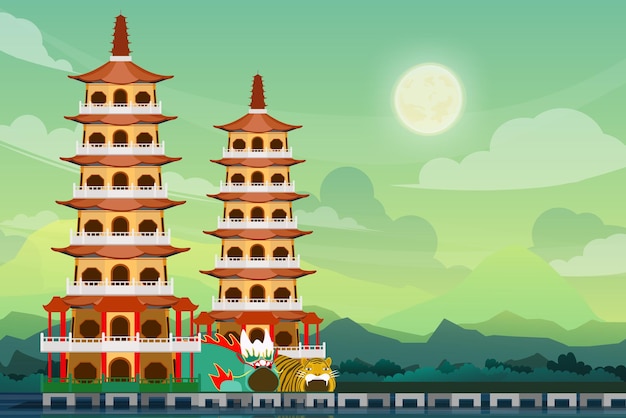
Longhu Pagoda.
Local Cuisine
After exploring the pagoda, treat yourself to local culinary delights:
– Shandong Pancakes: These savory treats are a must-try for their unique flavor and texture.
– Shandong Cuisine: Known for its rich flavors and use of fresh, local ingredients, the regional dishes will leave you craving more.
Accommodation
Where to Stay:
– There are various homestays and hotels in the vicinity of Longhu Pagoda. It’s advisable to book your accommodation in advance, especially during public holidays, to secure a comfortable stay.
Practical Tips
- Dress Accordingly: The area can be windy, especially at the top of the pagoda. Bring a light jacket to stay warm.
- Charge Your Devices: The breathtaking views and intricate details will tempt you to take countless photos, so ensure your phone or camera is fully charged.
- Respect the Culture: As Longhu Pagoda is a site of historical and cultural significance, be mindful of local customs and etiquette during your visit.
Conclusion
With its rich history and stunning architecture, Longhu Pagoda offers a captivating glimpse into China’s cultural legacy. By following this guide, you’ll be well-prepared to enjoy your visit and create lasting memories in this enchanting part of Shandong Province.
Tickets: Prices, Booking, and Tips
Ticket Information for Longhu Pagoda
Visiting Longhu Pagoda is a journey into the rich tapestry of Chinese history and culture, and knowing the ticketing details will help you make the most of your experience. Below is a comprehensive guide to ticket prices, booking options, and some essential tips to enhance your visit.
Ticket Prices
- General Admission: Approximately 30 CNY (about $4.50 USD) for adults.
- Students: A discounted rate of around 15 CNY (about $2.25 USD) is available for students with valid ID.
- Children under 1.2 meters in height: Free admission.
- Seniors (aged 65 and above): Often receive discounts, so check for specific local offerings.
Booking Options
- On-Site Purchase: Tickets can be purchased at the entrance of Longhu Pagoda. This is a convenient option if you prefer spontaneity in your travel plans.
- Online Booking: For those who wish to secure their tickets in advance, online platforms like Trip.com or Ctrip offer easy booking options. This can save you time, especially during peak tourist seasons.
- Group Discounts: If you are traveling with a group, inquire about group rates either online or at the ticket counter. Discounts may be available for larger parties.
Tips for Your Visit
- Plan Your Timing: Aim to visit in the early morning or late afternoon for the best lighting for photos. The pagoda looks particularly stunning at sunrise and sunset.
- Dress Appropriately: The area can be windy, so it’s advisable to bring a light jacket, especially if you’re planning to go to the top of the pagoda.
- Stay Connected: Make sure your phone is charged for photos and navigation. Consider purchasing an eSIM or local SIM card for better connectivity during your trip.
- Explore Local Cuisine: After your visit, don’t miss out on local Shandong dishes such as pancakes and other traditional cuisines available in nearby eateries.
- Accommodation: If you plan to stay overnight, consider booking accommodations in advance, especially during weekends or holidays when demand can be high. Options range from local homestays to hotels.
By keeping these details in mind, your visit to Longhu Pagoda will not only be enriching but also seamless, allowing you to immerse yourself fully in the historical ambiance of this remarkable site. Enjoy your trip!
How to Get There: A Complete Transportation Guide
Getting to Longhu Pagoda: Your Essential Transportation Guide
Visiting the Longhu Pagoda (龙虎塔) is a journey through time, offering a glimpse into China’s rich cultural heritage. Nestled under the Baihu Mountain in Jinan’s Licheng District, this ancient architectural marvel is easily accessible through various means of transportation.
By Air
Nearest Airport:
The closest airport to Longhu Pagoda is Jinan Yaoqiang International Airport (TAO). It is approximately 35 kilometers away from the pagoda, making it a convenient entry point for international travelers.
Airport Transfers:
– Taxi Services: Taxis are readily available outside the terminal. A ride to Longhu Pagoda will take around 40 minutes.
– Airport Shuttle Buses: Look for shuttle buses that connect the airport to Jinan city center, from where you can catch a taxi or local bus to the pagoda.
By Train
Train Stations:
– Jinan Railway Station: This is the main train station in Jinan, serving high-speed trains from major cities like Beijing, Shanghai, and Xi’an.
– Jinan West Railway Station: Another option for high-speed rail travelers.
From the Train Station to Longhu Pagoda:
– Taxi: The quickest way to reach the pagoda from either train station is by taxi. It takes about 30 minutes from Jinan Railway Station and around 20 minutes from Jinan West Railway Station.
– Public Bus: For a more economical option, take a bus from the station to the city center and transfer to a bus heading towards Licheng District. This journey can take about 1-1.5 hours.
By Bus
Local Bus Services:
Buses operate frequently from various parts of Jinan to Licheng District. Look for routes that specifically mention “Longhu Pagoda” or “Baihu Mountain.”
- Bus Stop Locations: Common departure points include:
- Jinan Bus Terminal
- City Center Bus Stations
Travel Time: Expect the bus ride to take around 1-2 hours, depending on traffic conditions.
By Car
Self-Driving:
If you prefer the convenience of your own vehicle, renting a car is a great option. Major car rental services are available at the airport and throughout Jinan.
- Directions:
- From Jinan city center, take the G20 highway and follow signs for Licheng District. The pagoda is well-signposted once you near the area. The drive typically takes about 30 minutes.
Parking:
There are designated parking areas near the pagoda, so you can park and explore the site easily.
Ride-Sharing Services
For those who prefer not to navigate public transport or drive, ride-sharing apps like Didi and Shunfeng are widely used in China. Simply download the app, input your destination, and a driver will pick you up from your location.
Tips for Your Journey
- Language: While many signs are in English, having a translation app or basic Mandarin phrases can enhance your experience, especially when asking for directions.
- Time of Visit: Consider visiting during off-peak hours to avoid crowds and fully appreciate the pagoda’s historical significance.
- Weather Preparedness: Check the weather forecast before your visit, and dress accordingly, as it can be windy at the top of the pagoda.
Embarking on your adventure to Longhu Pagoda promises not only an encounter with a stunning piece of history but also a chance to immerse yourself in the local culture of Shandong province. Safe travels!
Local Cuisine and Accommodation Nearby
When visiting the Longhu Pagoda (龙虎塔), immerse yourself in the rich flavors of Shandong cuisine and find a cozy place to stay nearby, enhancing your cultural and historical experience.
Culinary Delights
Shandong province is renowned for its culinary heritage, and a visit to Longhu Pagoda offers a chance to savor some local specialties. Here are a few must-try dishes:
-
Shandong Pancakes (煎饼): These savory pancakes are a popular street food, often filled with vegetables, eggs, and a variety of sauces. They provide a deliciously crispy yet soft texture that’s perfect for a quick bite before or after your visit to the pagoda.
-
Braised Pork (红烧肉): A staple in Shandong cuisine, this dish features tender pork belly cooked slowly in a rich soy sauce, creating a sweet and savory flavor that will leave you wanting more.
-
Fish in Sweet and Sour Sauce (糖醋鱼): Freshwater fish, often caught from nearby lakes, is prepared with a tangy sauce that balances sweetness and acidity, making it a delightful choice for seafood lovers.
-
Dumplings (饺子): Shandong-style dumplings are typically larger and heartier than those found in other regions. Stuffed with a variety of fillings, they are a comforting option, especially when served with a side of vinegar for dipping.
Nearby Accommodation
To ensure a comfortable stay during your visit, consider these accommodation options close to Longhu Pagoda:
-
Local Homestays: Experience authentic Shandong hospitality by staying in a homestay. Many locals offer rooms in their homes, providing a warm and welcoming atmosphere, along with the chance to enjoy home-cooked meals.
-
Boutique Hotels: For a touch of luxury, boutique hotels in Jinan blend traditional Chinese architecture with modern amenities. They often include features like on-site restaurants serving local cuisine and stunning views of the surrounding landscape.
-
Budget Hostels: If you are traveling on a budget, consider staying in one of the hostels in the area. These often provide dormitory-style accommodations and are a great way to meet fellow travelers.
-
Chain Hotels: Familiar international chain hotels offer reliable comfort and services, typically located in central Jinan, making it easy for you to explore both the pagoda and the city.
Tips for Your Trip
-
Advance Booking: Especially during holidays or weekends, accommodations can fill up quickly. It’s wise to book in advance to secure your preferred lodging.
-
Local Cuisine Availability: Many local eateries may not have English menus, so consider downloading a translation app or bringing a phrasebook to facilitate your dining experience.
With these culinary and accommodation options, your journey to Longhu Pagoda will not only be a feast for the eyes but also a delightful adventure for the palate. Enjoy your exploration of this historical gem and the vibrant culture of Shandong!
Frequently Asked Questions
Frequently Asked Questions about Longhu Pagoda
1. Where is Longhu Pagoda located?
Longhu Pagoda is situated in Liubu Village, Licheng District, Jinan City, Shandong Province, China. It lies under Baihu Mountain and is easily accessible by car or bus from Jinan.
2. What is the historical significance of Longhu Pagoda?
This ancient pagoda, believed to date back to the late Tang Dynasty, is a remarkable example of traditional Chinese architecture. It features intricate carvings of dragons and tigers, symbolizing strength and protection, and is recognized as a key cultural relic.
3. How long should I plan to visit Longhu Pagoda?
A visit typically takes about 1 to 2 hours. This allows enough time to explore the pagoda, take photos, and absorb the surrounding natural beauty.
4. What are the best times to photograph Longhu Pagoda?
For stunning photographs, visit at sunrise when the first light casts a warm glow on the pagoda, or at dusk when the sky displays vibrant colors. Both times offer a magical backdrop that enhances the pagoda’s architectural beauty.
5. Are there any local dishes I should try nearby?
Absolutely! While in the area, be sure to indulge in local Shandong specialties, such as Shandong pancakes and traditional dishes that showcase the region’s culinary heritage. These flavors will enhance your cultural experience.
6. What should I wear when visiting Longhu Pagoda?
Dress comfortably and be prepared for varying weather conditions. It can get windy at the top of the pagoda, so wearing a light jacket is advisable, especially during cooler months. Additionally, comfortable shoes are recommended for exploring the area.
7. How can I get to Longhu Pagoda without driving?
If you’re not driving, consider using ride-hailing services like Didi or local buses, which are affordable options for reaching the pagoda. Be sure to check the bus schedules in advance to plan your return journey.
8. Where can I stay near Longhu Pagoda?
There are various accommodation options available, including homestays and hotels. It’s advisable to book in advance, especially during peak travel seasons or holidays, to ensure you have a place to stay close to this historic site.
Final Thoughts on Your Trip
As you conclude your journey at the magnificent Longhu Pagoda, take a moment to reflect on the layers of history and culture that envelop this ancient site. Standing beneath the soaring structure, it’s easy to feel connected to the myriad lives that have passed through these grounds, each leaving their mark on the rich tapestry of Chinese heritage.
Embrace the Experience
Your visit to Longhu Pagoda is more than just a sightseeing adventure; it’s an immersion into the heart of Chinese architectural brilliance and spiritual tradition. Here are a few final thoughts to enhance your experience:
-
Capture the Moments: The ethereal beauty of the pagoda at sunrise or dusk offers an unparalleled photographic opportunity. Make sure your camera is ready to capture these fleeting moments.
-
Savor Local Flavors: Don’t miss indulging in Shandong’s culinary delights. The local pancakes and other regional dishes will provide a delicious insight into the culture that surrounds you.
-
Engage with the History: Take time to appreciate the intricate carvings and architectural styles that tell stories of dynasties past. Each relief and structure is a testament to the skilled artisans and the cultural significance of the site.
Your Journey Continues
Longhu Pagoda stands as a symbol of resilience and beauty, witnessing the passage of time through natural and man-made challenges. As you leave, carry with you the stories of this enchanting place and the inspiration it ignites. Whether you find yourself recounting tales to friends or planning your next adventure, let the spirit of Longhu Pagoda guide you to explore more of what China has to offer.
Embrace the echoes of history and allow them to enrich your travels beyond this remarkable destination. Safe travels, and may your wanderlust lead you to many more hidden gems along the way!